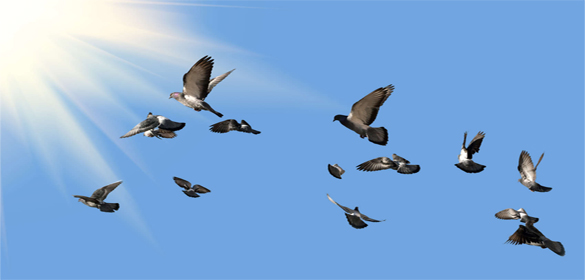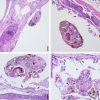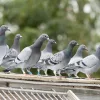
Overtraining Before Full Recovery in Racing Pigeons
Overtraining Before Full Recovery in Racing Pigeons: A Hidden Threat to Performance
In the high-stakes world of racing pigeons, fanciers often push their birds hard, hoping to gain a competitive edge. But there’s a critical mistake many overlook—overtraining pigeons before they’ve fully recovered from races. This misstep doesn’t just reduce performance; it can set back a loft’s entire season.
This blog explores the dangers of overtraining, how to recognize when your pigeons need rest, and how to implement a structured recovery calendar. By respecting your birds’ recovery cycles, you can preserve muscle energy, prevent injuries, and maintain top-tier performance throughout the racing season.
Why Recovery Matters in Racing Pigeons
Racing pigeons expend massive energy during races. Their muscles accumulate lactic acid, and respiratory systems work overtime. After such exertion, the body needs time to:
-
Clear metabolic waste (like lactic acid)
-
Rehydrate and rebalance electrolytes
-
Repair micro-muscle damage
-
Replenish energy stores (glycogen)
-
Restore immune function
Pushing a bird too early into post-race training can disrupt this recovery process, leading to:
-
Chronic fatigue
-
Decreased race speed
-
Increased vulnerability to illness
-
Loss of muscle tone and condition
-
Mental stress, affecting homing instinct
Signs of Incomplete Recovery
How can you tell if your birds aren’t ready to return to full training?
Look for the following signs:
-
Wing tension: Wings feel tight or inflexible when gently stretched.
-
Slow response time: Birds are less eager to take off or land during tosses.
-
Droopy posture: Tail and wings droop when perching.
-
Pale wattles and ceres: Indicates poor blood circulation or stress.
-
Dull feathers: Lack of sheen suggests poor nutrient absorption or recovery lag.
-
Soft droppings: Often a result of internal stress or residual fatigue.
These indicators mean your pigeons need more time to heal and restore balance before ramping up training intensity.
Understanding the Crash: The Cost of Overtraining
When pigeons are returned to training too soon, performance doesn’t just plateau—it crashes.
Physiological Consequences:
-
Electrolyte imbalance: Birds lose vital minerals like sodium, potassium, and magnesium. Without replenishment and rest, this affects muscle contraction and nerve function.
-
Persistent lactic acid: Accumulated lactic acid causes stiffness, cramps, and slower muscle response.
-
Immune suppression: Overtraining weakens defenses, increasing the risk of respiratory infections or canker outbreaks.
Psychological Consequences:
-
Loss of motivation: Birds that feel constant fatigue lose the competitive drive to return quickly.
-
Navigation errors: Mental fatigue affects their internal compass, increasing the risk of straying or returning late.
The Smart Solution: A Structured Recovery Calendar
The key to avoiding overtraining is developing and sticking to a structured post-race recovery calendar. Here’s a recommended outline:
Day 1 (Race Return):
-
Allow complete rest.
-
Offer electrolytes like PHP Electro Boost to rehydrate and balance pH.
-
Feed light grains with added barley for gut health.
Day 2:
-
Observe closely for signs of exhaustion or soreness.
-
Offer probiotics and a B-complex vitamin to support internal repair.
Day 3:
-
Short, gentle loft fly or light toss (under 10 km).
-
Begin wing tension assessment.
-
Offer herbs for respiratory support (e.g., oregano, thyme extract).
Day 4–5:
-
Gradually increase flight time.
-
Monitor wing and muscle condition daily.
-
Use recovery tonics or products containing amino acids (e.g., methionine, lysine).
Day 6–7:
-
Resume normal training, if signs of full recovery are evident.
This calendar can be modified based on race intensity, environmental stress (e.g., heat), or bird condition.
Assessing Wing Tension: A Pigeon Fancier’s Skill
Wing tension is one of the clearest indicators of recovery. To assess:
-
Gently stretch the wing at the joint.
-
Feel for resistance in the major flight muscles.
-
If tension is high or if the bird resists, delay further training.
-
Compare across birds to identify recovery variances.
Combine this assessment with daily weight tracking and droppings analysis for a full recovery profile.
Nutrition & Hydration: The Recovery Cornerstones
Recovery isn’t just about rest—it’s about what you put into your birds.
Electrolytes
Replenish sodium, potassium, and chloride to rehydrate cells and reduce muscle fatigue. Products like PHP Electro Boost or homemade glucose-electrolyte solutions work well.
Proteins & Amino Acids
Essential for muscle repair. Offer legume-based grains (e.g., peas) or amino acid-enriched supplements.
Fiber & Digestive Support
Include 10–20% barley in the recovery mix to regulate digestion and firm droppings.
Herbs & Natural Remedies
Use thyme, eucalyptus, or oregano oil to reduce inflammation and support the respiratory system.
When to Delay Training: Know the Red Flags
You must prioritize recovery over routine. Delay training if:
-
Birds still pant or appear winded after minimal effort.
-
Droppings remain green or watery.
-
Appetite is poor, even for favorite seeds.
-
Birds isolate or avoid perch interaction.
Your goal isn’t just to train—it’s to build back stronger.
Tools for Managing Training vs. Recovery
To stay organized, use:
-
A loft whiteboard to note daily recovery observations.
-
A training calendar to log distances and rest days.
-
Performance charts to compare pre- and post-race response times.
-
An assessment log for wing tension and condition notes.
Tracking this data helps you avoid overtraining pitfalls and fine-tune your program season by season.
The Competitive Edge: Recovery Wins Races
While it may feel like you’re falling behind by delaying training, proper recovery is what fuels repeat success.
Benefits of structured recovery:
-
Higher race consistency
-
Shorter rest periods over time
-
Reduced disease risk
-
Better mental focus in birds
-
More predictable performance peaks
Respecting the body’s natural rhythm ensures your pigeons come back stronger, faster, and ready to win.
Final Thoughts
Overtraining is a silent performance killer. As a racing pigeon fancier, your birds depend on your ability to read their signals, allow full recovery, and know when to push—and when to pause.
Use this structured approach to safeguard your flock’s health, extend their competitive careers, and dominate the skies one well-planned flight at a time.


